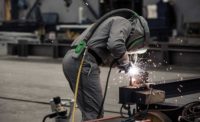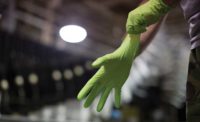As a tool, headlamps are essential when hands-free lighting is required in low-light areas for a wide range of tasks, such as operating and maintaining machinery or assessing its condition. Headlamps are also necessary for safe, efficient personnel movement throughout the plant, particularly in confined or restricted spaces. At sites with flammable gases, vapors, liquids, materials or dusts on the premises or in the air, having a headlamp that does not generate a spark is critical.
To protect personnel in any work environment and to defend against such liability, a growing number of industrial safety officers are including or specifying headlamps in the company budget, as PPE.
“It is safer for industrial plants to provide suitable headlamps upfront rather than leaving it up to employees to make their own purchases. However, department approval of only intrinsically safe product would handle the issue. Preventing even one serious injury, fire, or explosion would pay for any implementation,” says Scott Colarusso, General Manager and Co-Owner, All Hands Fire Equipment & Training, a Neptune City, NJ supplier of fire safety equipment to various industries that has equipped and trained thousands of firefighters nationwide.
in production, processing, or maintenance settings where the environment is inherently volatile, headlamps should carry the proper certification for various classes, divisions, and groups of materials. When a headlamp is rated for all these options, it essentially means it is certified as safe for use in most hazardous environments.
The intrinsically safe Vizz II headlamp by Princeton Tec, meets the requirements (Classes I, II, III; Divisions 1,2; and Groups A-G). Trenton, NJ based Princeton Tec is a producer of ETL and UL-approved lighting products and manufactures headlamps that meet strict global safety requirements.
“Whether for OSHA, Zone 0, or state standards, intrinsically safe products like the Vizz II headlamp help industrial safety officials ensure that all the bases are covered. So, there is nothing from the lighting that could spark a potential fire or explosion in a work environment,” says John Navarro, a purchasing agent for Bayville, NJ-based CWR Wholesale Distribution, a supplier to various industries including automotive, consumer electronics, oil and gas, and marine. Previously, Navarro was a nationally registered paramedic and certified New Jersey state hazardous material technician.
Because headlamps can be dropped or bumped in industrial settings, it is also important that the equipment is designed to reliably withstand rough handling.
In response, some manufacturers like Princeton Tec now make headlamps with durable thermoplastic material designed to withstand drops and rough handling including being thrown into a truck bed. The units not only provide up to 10 hours of light without a battery change but also have superior resistance to common, potentially dangerous, industrial chemicals and solvents.
The latest models also offer anti-static properties and safety features, such as a mechanical locking mechanism that requires a tool to open the battery compartment. This prevents users from inadvertently opening the battery housing in a hazardous environment, which could not only result in electric shock, but also potentially ignition or explosion.
For more info, call 1-800-257-9080; email questions@princetontec.com; visit princetontec.com; or write to Princeton Tec, PO Box 8057, Trenton, NJ 08650.



